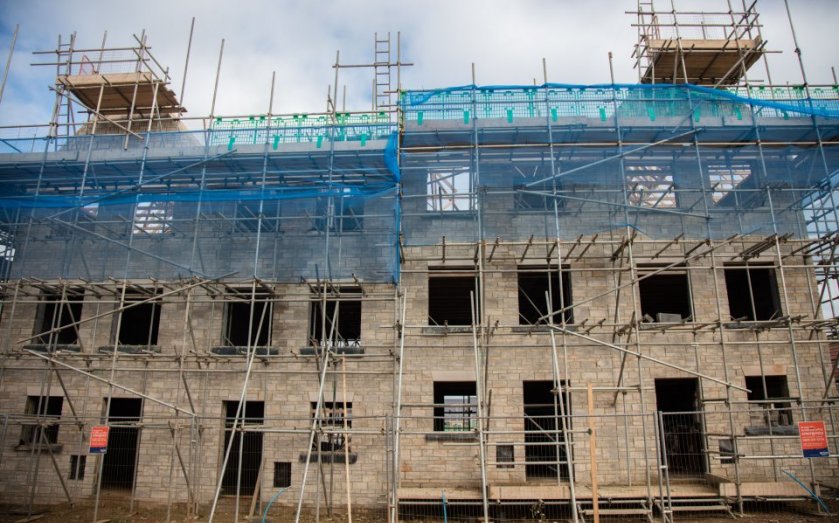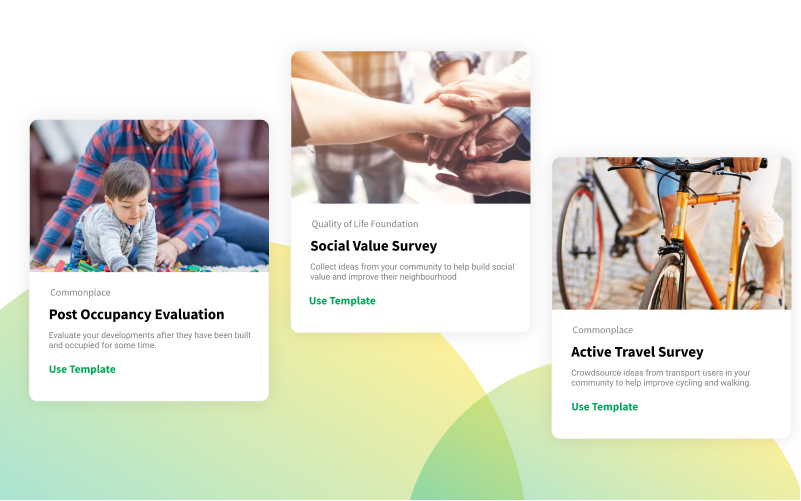Discover the Commonplace good practice guide to public engagement during development
Commonplace is used for every part of development: from pre-planning and construction to tenant well-being and post-occupancy! Our new blog series will provide weekly insights into the way developers use Commonplace.
When it comes to developing new or existing buildings and areas, it is crucial to involve the community from beginning to end. While many developers make sure to get input from the local community during the early planning stages, it's important to maintain this engagement throughout the entire project and beyond. We want to show you the many advantages of consistently connecting with the community throughout the development process.
This series will cover the top five developer uses for Commonplace as well as the different kinds of community engagement required for each.
Let’s begin with a quick overview.
Read the full series
#1: Project planning phase
#2: Construction phase
#3: Co-design
#4: Social value
#5: Post-occupancy evaluation
Book a free demo now to see how we can help your next project get off the ground and avoid expensive delays
Pre-planning & Planning phase

Familiar with this phrase? "The planning application for a project is in so our communications can rest." Well, that's not really true… Typically there will be several months of behind-the-scenes activity and during this time, continuous engagement is vital. We’ve all encountered a surprised and disconcerted public that does not link a proposal to a consultation made a year earlier - giving rise to mistrust and hostility. Continuous engagement prevents a desert of disconnect between developers and the people living and working in your project area.
Good, continuous communication not only strengthens the relationship between you and the public but makes it more likely that a plan will be put through on the first attempt, saving both time and money. With an informed community who: a) are backing the projects b) have already had their concerns about the development addressed directly and c) have seen clear evidence that they are being kept in the loop even when it’s not a legal requirement - you've already cleared three major roadblocks that could have led to a costly postponement.
The planning phase is lengthy and expensive for developers - it can last longer than the build itself. It's also one of the most important parts of the development process, because it involves collaboration with other members of your team and community. It should be an inclusive process that involves listening, understanding, and learning about your communities needs. This is where compromises can be made and the public’s expectations can be managed.
Construction phase

Engagement should not and need not end once there are spades in the ground, either. Continuous engagement helps maintain a good relationship with the public. Is the noise/space of development affecting the day-to-day life/commute of the surrounding community? Are you available to answer questions throughout? Being able to talk directly to people can help mitigate complaints and stop them from being sent to the council.
Ignore this, and it can lead to issues like:
- People in surrounding areas complaining about the noise of construction
- They then complain directly to the council with no easy way to talk to developers
- The developers then lose their reputation with the local authority
- Maybe even with trading standards if enough people complain directly there.
The good news is, the Commonplace platform that you used for pre-planning has the built-in tools to support you throughout this stage of the process as well.
Co-Design
Communities want to feel a part of the developments happening around them and enabling at least some co-design puts this desire front and centre of development. It also:
- Increases productivity because it lets you build things that people want to use and share their ideas early in the development cycle.
- Improves collaboration and communication between developer and community so that everyone has a common understanding of what they’re building together, what it will look like once finished and how it will be used.
- Increases trust between stakeholders and users because there is better transparency around what’s being built (and why).
Commonplace helps developers co-design with their users by giving them an easy way to collect user feedback on a shared platform.
Social Value

Considering social value as part of a project is something we’ve talked about multiple times on our blog, but it always bears repeating!
Measuring the social value that a project brings to an area can be a tricky concept to grasp as well as how people’s quality of life is affected during and after a project is completed. It’s also something difficult to put a monetary value against and focuses on people’s lived experiences in and around developments. This is where a shared community platform is key - the data gathered helps to create a picture of people’s thoughts and general well-being. If you know what people really want out of their homes, what their living conditions are and what they need to feel more secure, you can then use that information to better their quality of life.
There’s lots of evidence about what makes a good place to live(as shown in our interview with our partner, the Quality of Life Foundation), with one of the best ways to do things looking into the long-term and what’s going to last. Putting effort into schemes that are socially, economically and environmentally sustainable in the long run for tenants can reap amazing results.
Post-Occupancy
The engagement journey is a continuous one- even when tenants decide to leave the property. Having the tools to conduct a thorough Post-Occupancy Evaluation is vital, not only for necessary building upkeep but closing the loop of conversation with that tenant and giving the next one the best possible start in their new home.
Like with all our projects, we always recommend having both digital and physical options for both marketing and communication- with digital surveys/hubs for post-occupancy able to make the process much quicker and easier for many residents. This also means that all the data goes directly to you with no additional input needed, letting you make changes or upgrades while evaluating how your property has performed during a tenancy. You can also create questions and sections to see how this has affected the tenant's quality of life (as mentioned in the previous point)- giving you actionable points to increase your property’s social value.
It would be impossible to cover all of our work in these areas in the blog (without publishing a novel), so make sure to tune in over the next five weeks for a detailed breakdown of each! With proven continuous engagement as our frame of reference, we'll show examples of good practices that focus on each use case and how you can take inspiration for your upcoming projects.
Can’t wait that long? Our dedicated team is here to show you right now! Just click below and book in your free demo now…
.png)


